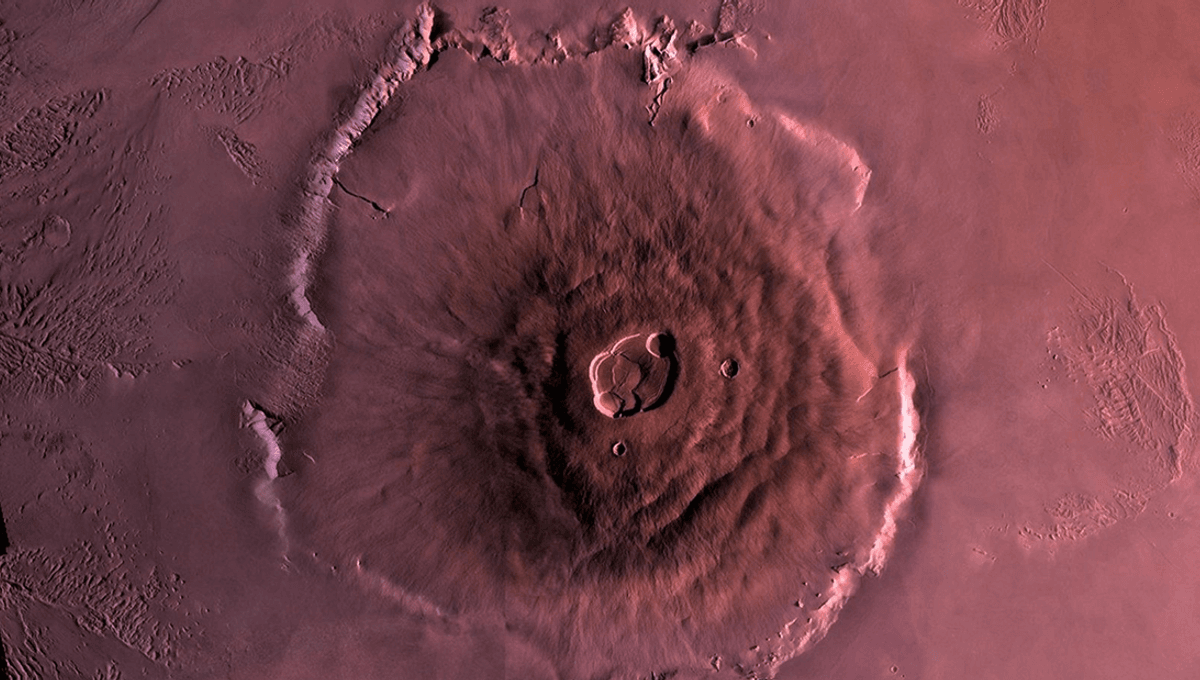
Mount Everest, one of the go-to examples of a “thing that is large”, looks like a tiny hillock in comparison to other mountains of the Solar System.
While Everest stands at 8,849 meters (29,032 feet) tall, the two tallest mountains orbiting the Sun reach over 20,000 meters (65,600 feet) in elevation. The second-tallest mountain structure lies not on a planet, but on Iapetus, one of Saturn’s ridiculous number of moons. This tidally-locked moon is notable for the stark difference between its hemispheres, with one side much darker than the other.
“The second most notable feature of Iapetus is its ‘equatorial ridge,’ a chain of 6-mile (10-km) high mountains girdling the moon’s equator. On the anti-Saturnian side of Iapetus, the ridge appears to break up and distinct, partially bright mountains are observed. The Voyager I and Voyager II encounters provided the first knowledge of these mountains, and they are informally referred to as the Voyager Mountains,” NASA explains.
“There are two theories on how the ridge formed. Some scientists think the ridge was formed at an earlier time when Iapetus rotated much faster than it does today; others think the ridge is made of material left from the collapse of a ring.”
At its highest, the ridge reaches around 20 kilometers (12.4 miles). Olympus Mons, on Mars, is taller still, at 40 kilometers (25 miles) from base to summit.
The mountain is a shield volcano, a type of volcano built up from repeated lava flows over millions of years, as basaltic and/or andesitic lava pours down the volcano’s side. As a result, Olympus Mons has a base covering an area around the size of Arizona, and an average slope of around 5 percent.
“It’s a mountain so large that a stroll up its side would hardly cause much of a vertical sensation. But at more than two and a half times the height of Mt. Everest, Olympus Mons is indisputably the king of the Solar System’s peaks,” NASA explains of the mountain. “At the 25-kilometer [15.5-mile] high summit, one would easily see the curvature of Mars. In fact, the mountain rises so far above the mean surface that it actually leaves all but 5 percent of the Martian atmosphere behind.”
“Much of the plains surrounding the volcano are covered by the ridged and grooved ‘aureole’ of Olympus Mons. The origin of the aureole is controversial, but may be related to gravity sliding off of the flanks of an ancestral volcano,” NASA adds in a separate post. “The summit caldera (central depression) is almost 3 km [1.9 miles] deep and 25 km [15.5 miles] across. It probably formed from recurrent collapse following drainage of magma resulting from flank eruptions.”
Intriguingly, the volcano may still be active, and may even erupt again in the future. Recently, seismometers on Mars have detected activity from the region, while geological evidence suggests that the volcano has been active in the recent geological past.
“Glacial deposits at the base of the Olympus Mons escarpment show evidence for repeated phases of activity as recently as about four million years ago,” one paper on the topic explains. “Morphological evidence is found that snow and ice deposition on the Olympus construct at elevations of more than 7,000 metres [22,966 feet] led to episodes of glacial activity at this height. Even now, water ice protected by an insulating layer of dust may be present at high altitudes on Olympus Mons.”
Because of potential water and a source of heat, Olympus Mons has been suggested as a place to look for potential alien life; living it up on the biggest volcano in the Solar System.
Source Link: Olympus Mons: The Biggest Volcano In The Solar System Makes Mount Everest Look Like A Hillock